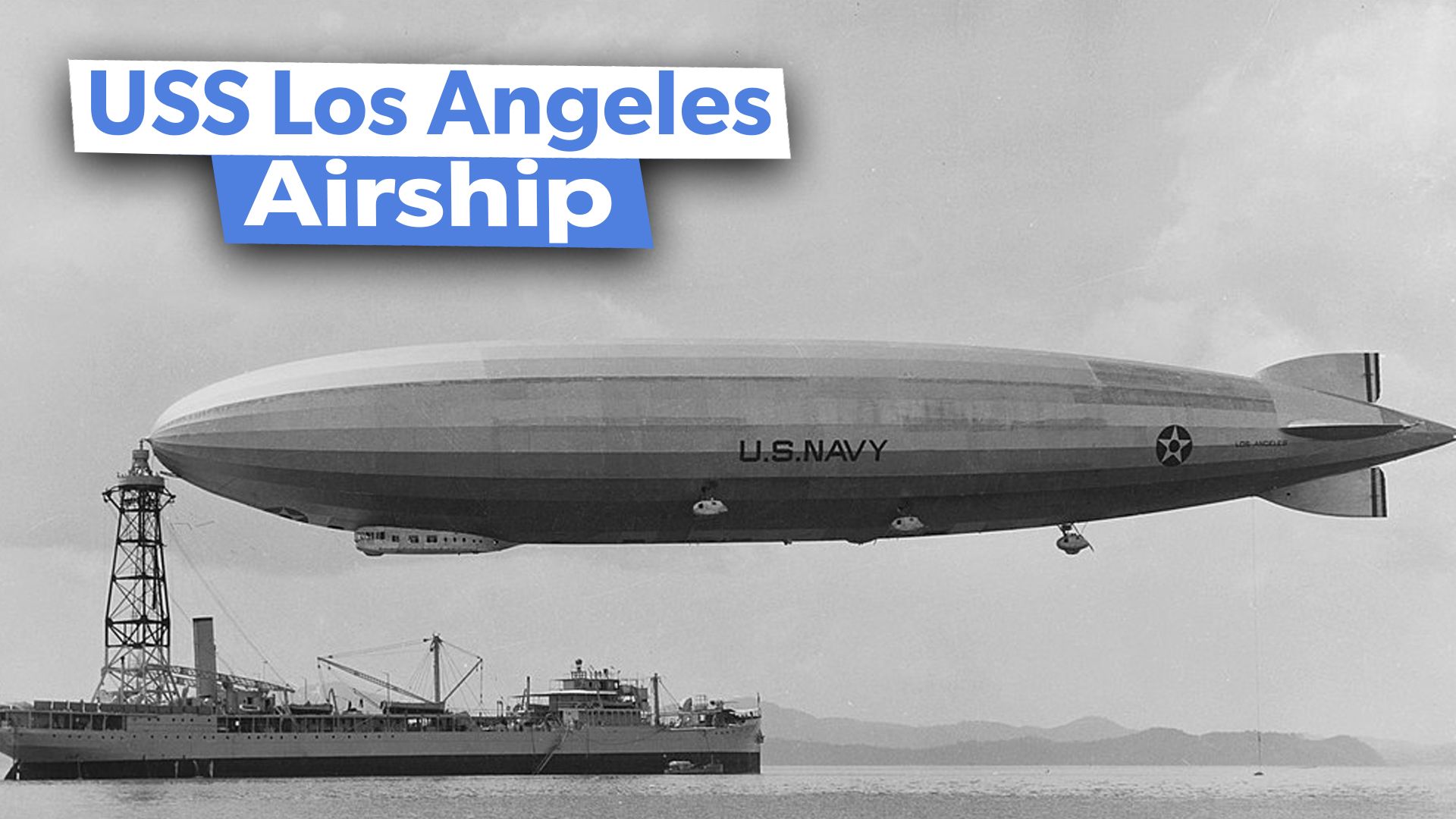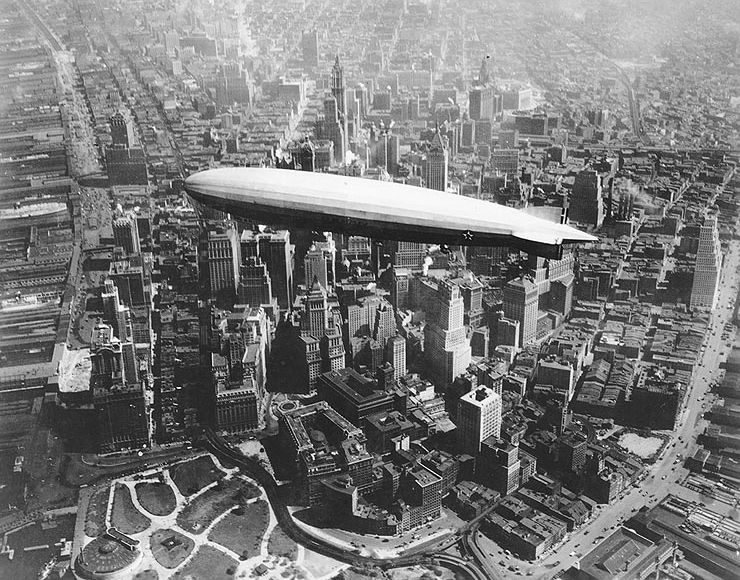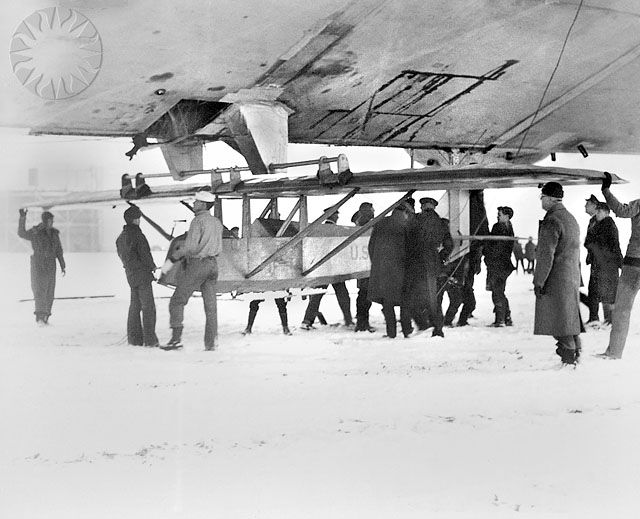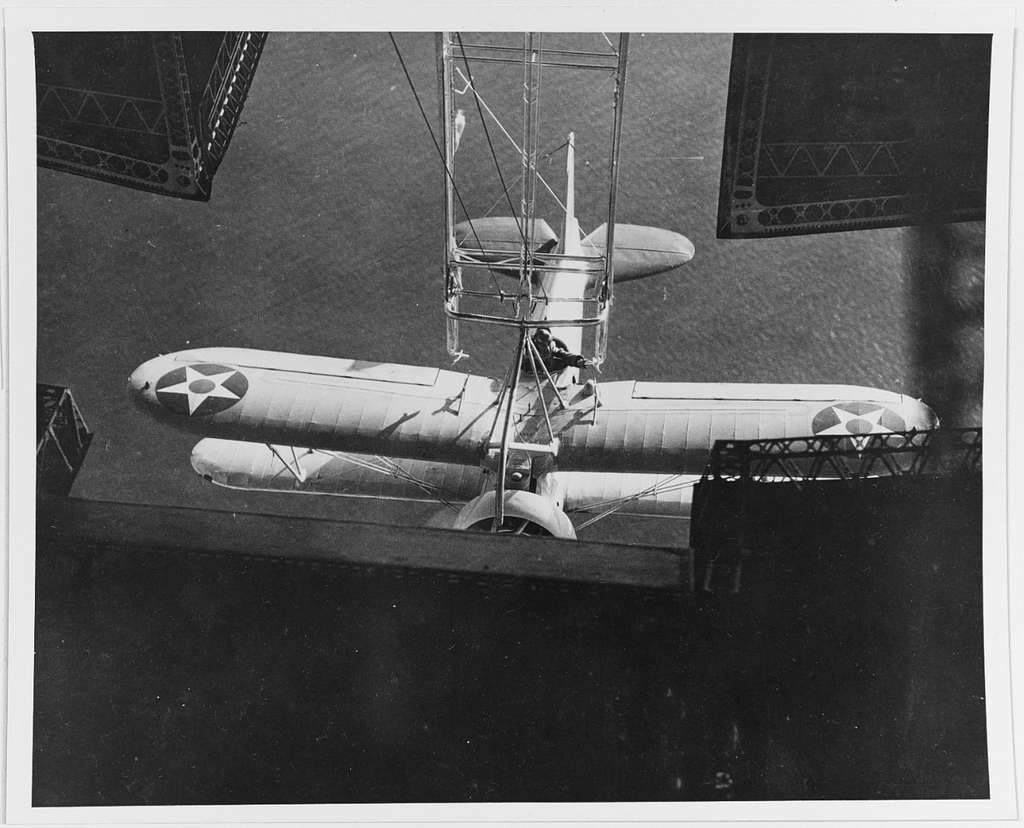At one point,
the world thought that airships were the future of air travel
and that they would play a role in war. The Germans used them extensively for reconnaissance in WW1 and
even to bomb London and other cities
. One of the first airships
acquired by the US Navy was the USS Los Angeles (ZR-3). It was constructed as the LZ-126 and was built by Germany’s Zeppelin
company in 1923-1924 and handed over to the US as a form of war reparations.
Why the USS Los Angeles was a passenger airship
The US was meant to receive Zeppelins from Germany as war reparations, but their crews sabotaged them in 1919, so new airships were needed. The German crew also scuttled their own navy (the second largest in the world) to prevent the ships from being taken as war prizes.
The British had built a massive airship for the Americans (called the R-38), but it crashed in Great Britain with US and British crews onboard before it was officially handed over to the US Navy (the US had also built the USS Shenandoah ZR-1). This increased the American desire to procure a German-built airship.
Timeline:
- 1783: First manned balloon flight
- 1900: First zeppelin flight
- 1921: Crash of R-38
- 1922-1924: USS Los Angeles built
- 1924: USS Los Angeles first flight & delivery
- 1932: USS Los Angeles Final flight
- 1939: USS Los Angeles Broken up
After the war, the Treaty of Versailles placed a range of restrictions on Germany, including banning it from operating an air force. This included a ban on Germany from constructing Zeppelins (which would have meant the end of the Zeppelin Company). In an effort to keep his company alive, Hugo Eckener proposed building zeppelins for the United States as a form of war reparations.
However, the British opposed this (after all, London had just been bombed by Zeppelins). A compromise was eventually reached where the Germans were permitted to build the Zeppelins for the Americans, but only if they were designed solely for civilian and not military purposes.
“Ultimately, a compromise was reached, under which the Zeppelin Company was allowed to build a new ship for the Americans on the condition that it be designed and used solely for civil, and not military, purposes.” Airships.net
This was why the US Los Angeles was built as a German passenger zeppelin. The construction of the USS Los Angeles allowed the decimated German airship industry to get back on its feet and would go on to produce the famous Graf Zeppelin and Hindenburg.
“Since Los Angeles had been designed under an agreement limiting the ship to civilian use, it had been built with accommodations appropriate to a long-distance commercial airliner, including a large passenger cabin featuring sleeping compartments and a first-class galley for the preparation of hot meals.” – Airships.net
Fate of the USS Los Angeles
The USS Los Angeles was successfully flown transatlantic to the US, filled with German hydrogen. After arriving in the US, it was filled with helium.
The USS Los Angeles designed ZR-3 (Zeppelin Rigid number 3) and was delivered to the US Navy in October 1924. It was mostly used for experimental work. After WWI, the United States sought to catch up with Germany (and the UK) in rigid airships. The Los Angeles was used to develop the US parasite fighter program and was a stepping stone in developing the Akron–class flying aircraft carriers.
|
USS Los Angeles (ZR-3) |
|
|---|---|
|
Length: |
656 feet |
|
Diameter: |
90.7 feet |
|
Cruising speed: |
50 knots |
|
Flight crew: |
10 officers and 33 men |
|
Total flights: |
331 |
The ship was used to experiment with launching and retrieving fixed-wing aircraft from a trapeze fitted to the bottom of its hull. It also saw a few long voyages, including trips to the Panama Canal Zone, Cuba, and around the United States.
The USS Los Angeles is the only US Navy Zeppelin to retire instead of crashing and was by far the most successful of the Navy’s otherwise ill-fated airships. It was retired in 1932 and scrapped in 1939.
Towards flying aircraft carriers
The US Navy was interested in developing long-range scout airships to support its fleet operations (in Naval warfare, the winning side is often the side that spots the other first and can fire the farthest). As this was the time before advanced radar, recon had to be by line of sight.
|
US Navy airship: |
Country built: |
Served: |
Fate: |
|---|---|---|---|
|
USS Shenandoah (ZR-1) |
United States: |
1923-1925 |
Crash on 3 September 1925 |
|
R-38 (ZR-2) (not delivered to US Navy) |
United Kingdom |
1919 (built) |
Crashed in 1921 |
|
USS Los Angeles (ZR-3) |
Germany |
1924-1932 |
Decommissioned in 1932 |
|
USS Akron (ZRS-4) |
United States: |
1931-1933 |
Crashed in 1933 |
|
USS Macon (ZRS-5) |
United States: |
1933-1935 |
Crashed in 1935 |
To see even further, one idea was to marry lighter-than-air and heavier-than-air aircraft. The two Akron-class flying aircraft carrier airships (the USS Akron and USS Macon) were built to carry parasitic aircraft. These
airships could launch and recover Curtiss F9C Sparrowhawk biplanes
. While a novel idea, it ultimately failed as both airships crashed in short order.
Eventually, advances in long-range aircraft, together with the zeppelins’ abysmal safety record, rendered them largely obsolete by WW2.





